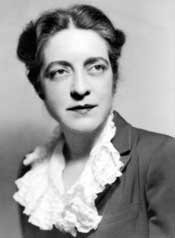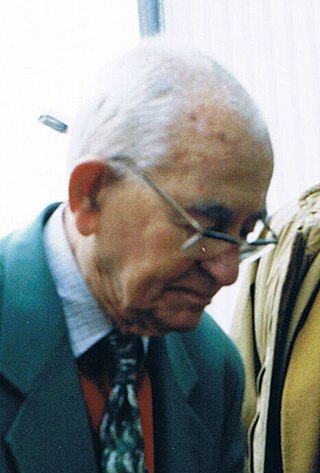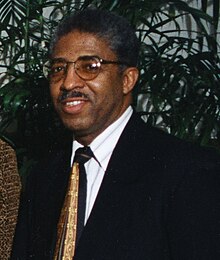
Ben Roy Mottelson was an American-Danish nuclear physicist. He won the 1975 Nobel Prize in Physics for his work on the non-spherical geometry of atomic nuclei.

The International Union of Pure and Applied Physics is an international non-governmental organization whose mission is to assist in the worldwide development of physics, to foster international cooperation in physics, and to help in the application of physics toward solving problems of concern to humanity. It was established in 1922 and the first General Assembly was held in 1923 in Paris. The Union is domiciled in Geneva, Switzerland.

Virginia Louise Trimble is an American astronomer specializing in the structure and evolution of stars and galaxies, and the history of astronomy. She has published more than 600 works in Astrophysics, and dozens of other works in the history of other sciences. She is famous for an annual review of astronomy and astrophysics research that was published in the Publications of the Astronomical Society of the Pacific, and often gives summary reviews at astrophysical conferences. In 2018, she was elected a Patron of the American Astronomical Society, for her many years of intellectual, organizational, and financial contributions to the society.

Melba Newell Phillips was an American physicist and a pioneer science educator. One of the first doctoral students of J. Robert Oppenheimer at the University of California, Berkeley, Phillips completed her PhD. in 1933, a time when few women could pursue careers in science. In 1935 Oppenheimer and Phillips published their description of the Oppenheimer–Phillips process, an early contribution to nuclear physics that explained the behavior of accelerated nuclei of radioactive hydrogen atoms. Phillips was also known for refusing to cooperate with a U.S. Senate judiciary subcommittee's investigation on internal security during the McCarthy era that led to her dismissal from her professorship at Brooklyn College, where she was a professor of science from 1938 until 1952.

Gregory Breit was a Russian-born Jewish–American physicist and professor at New York University (1929–1934), University of Wisconsin–Madison (1934–1947), Yale University (1947–1968), and University at Buffalo (1968–1973). In 1921, he was Paul Ehrenfest's assistant in Leiden University.
Anthony Philip French was a British physicist. At the time of his death he was professor emeritus of physics at the Massachusetts Institute of Technology.

Arthur Gordon Webster was an American physicist who founded the American Physical Society.
The Klopsteg Memorial Award is an annual prize given to a notable physicist in memory of Paul E. Klopsteg. Established in 1990, it is awarded by the American Association of Physics Teachers.

Merle Anthony Tuve was an American geophysicist who was the Chairman of the Office of Scientific Research and Development's Section T, which was created in August 1940. He was founding director of the Johns Hopkins University Applied Physics Laboratory, the main laboratory of Section T during the war from 1942 onward. He was a pioneer in the use of pulsed radio waves whose discoveries opened the way to the development of radar and nuclear energy.

Julius Henry "Jute" Taylor was a professor emeritus at Morgan State University, where he was also the first chairperson of the department of physics, which he helped to establish at the university. He was the second African-American person to receive a PhD from the University of Pennsylvania in Philadelphia, Pennsylvania, and the first African-American person to receive a PhD in physics at the university. Taylor's research focused on x-ray diffusion, and electrical and optical properties of semi-conductors.

Louis Leprince-Ringuet was a French physicist, telecommunications engineer, essayist and historian of science.
Horace Richard Crane was an American physicist, the inventor of the Race Track Synchrotron, a recipient of President Ronald Reagan's National Medal of Science "for the first measurement of the magnetic moment and spin of free electrons and positrons". He was also noted for proving the existence of neutrinos. The National Academy of Sciences called Crane "an extraordinary physicist". The University of Michigan called him "one of the most distinguished experimental physicists of the 20th century". Crane was a chairman of the department of physics and a professor of physics at the University of Michigan, a member of the National Academy of Sciences.
Harrison McAllister Randall was an American physicist whose leadership from 1915 to 1941 brought the University of Michigan to international prominence in experimental and theoretical physics.
Edward Allan Frieman was an American physicist who worked on plasma physics and nuclear fusion. He was the director of the Scripps Institution of Oceanography from 1986 through 1996, and then the senior vice president of science and technology at the Science Applications International Corporation from 1996 on until his death in 2013.
The Frederic Ives Medal is the highest award of the Optical Society, recognizing overall distinction in optics. The prize was established in 1928 by Herbert E. Ives in honor of his father, Frederic Ives. Initially awarded every two years, it has been awarded annually since 1951. The prize is funded by the Jarus W. Quinn Ives Medal Endowment.

Janet Brown Guernsey, born Janet Brown, was a professor of physics at Wellesley College. She was active in the American Association of Physics Teachers and served as President from 1975 to 1976.
Eugene Hecht is an American physicist and author of a standard work in optics.
Gloria Lubkin was an American science journalist and editor for the magazine Physics Today, of which she was the editor-in-chief from 1985 to 1994. She also cofounded the Theoretical Physics Institute at the University of Minnesota and was a fellow of both the American Physical Society and the American Association for the Advancement of Science.
Joseph Valasek was an American physicist and professor emeritus of physics at the University of Minnesota. He specialized in geometrical and physical optics, experimental optics and spectroscopy, and x-rays. He is credited with the discovery of ferroelectricity, which he identified using Rochelle salts.
John McNeile Hunter was an American physicist and chemist, and the third African American person to receive a PhD in physics in the United States. He spent the entirety of his career as a professor of physics at the Virginia State College, a historically Black college in Petersburg, Virginia, where he also established and served as the first chair of the college's physics department. Virginia State College's physics program was one of the first at a historically Black college in the country. Hunter's research was focused on thermionics.










